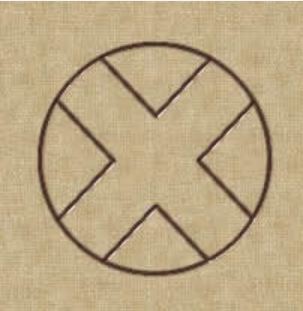PREFACE
MOVING ON TO HEBREW
MULTI-DIMENSIONALITY OF HEBREW
- Name of Letter
- Meaning of Name of Letter
- Appearance or shape of Letter
- Sound of the letter
- Value of the letter
INTRODUCTORY EXAMPLE FOR THE IMPATIENT
REFERENCE CHART OF ALPHABET
TWO VARIANTS INTODUCED IN MODERN HEBREW
There are also two variations introduced into Modern Hebrew in the Tiberian Period when the Tiberians added vowel, diacritical marks, and cantillation notes to the Hebrew writing system of the TANAKH (Old Testament). At that time information about the correct pronunciation and cantillation of the Holy Scriptures was being lost. So Aharon Ben-Asher and the Tiberian scholars added the extra symbols. Cantillation is not important to this section so we will skip this for now and address it in another place at the appropriate time. So one of the marks is a dot on top of the Shin letter on the right hand side for the SHin pronunciation and on the left hand side for Sin pronunciation. Here you have a unique variation of two different letter with one visual image and a qualifier letting you know which of the two pronunciations and meanings is in effect. Right now I cannot think of any examples of a word that can appear with both the SHin and the Sin.
The second variation is that there are 4 letters that can appear with a DAGESH or dot in the middle of the letter based on letters and vowel surrounding the letter. The rules of the DAGESH are beyond the scope of this webpage and are not important to this discussion. DAGESH mean “Stress” as in emphasized strong pronunciation. But in the case of the four letters it controls whether the letter will be pronounced as what is called a STOP or FRICATIVE in linguistics. A STOP is a letter that explodes from you lips as you pronounce it and cannot be pronounced for more than an instant. This would the letters Bet, Kaf, Pey, and Tav. The exception here is that in the Official Israeli Sephadi pronunciation the Tav letter is ALWAYS pronounced with a T sound regardless of whether it has the dot or not. In the Germanic Ashkenazi pronunciation the Tav without the dot is pronounced with an “S” sound.
The FRICATIVE is a letter that you can extend the pronunciation of the letter for as long as you like. These would be V for Vet, CH for CHet, F for Fey, and the TAV S pronunciation in the Ashkenazi dialect. I will add another web page addressing the differences between Sepharadit and Ashkenazit for those who wish to pronounce the language correctly. Most people migrate to Sepharadit pronunciation upon visiting Israel or encountering it but are never taught the differences properly.
CONCLUSION
Choosing some two dozen letters from a pool of 800-1000 EGYPTIAN HIEROGLYPHS offers us very important insights to the mindset and culture of the Alphabet architects and what was important to them and their thinking at that time. Please do not judge it from the 21st Century point of view or bias. This would be unfair and very wrong.
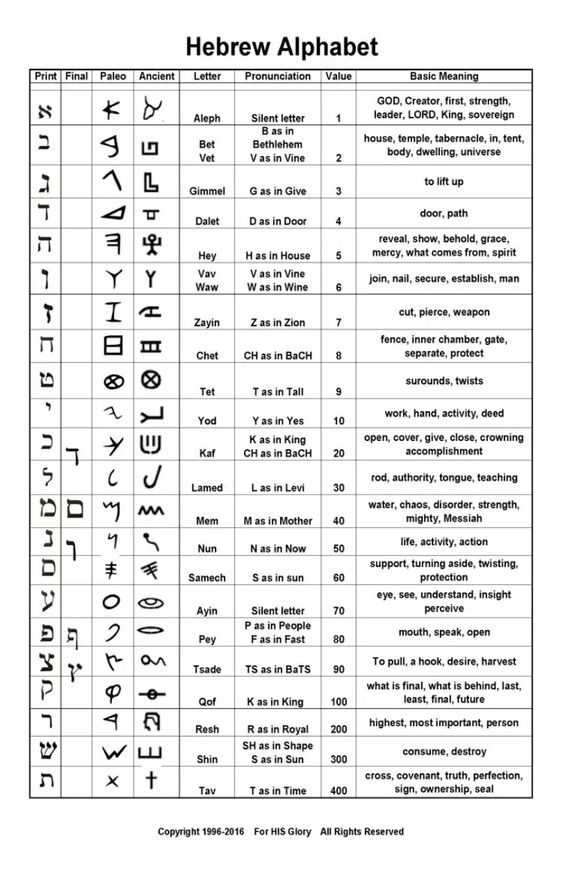
EXPLANATION OF MULTI-DIMENSIONAL HEBREW LETTERS
We are going to take all 22 of the letters of the Hebrew Aleph Bet in order and discuss all the dimensions of each letter. Each letter illustration will have 6 columns in the following order left to right:
- Letter position in the Aleph Bet
- The Hebrew letter name in English
- The Hebrew letter value
- The proto-Sinaitic or proto-Canaanite earliest visual representation
- The final Ancient Hebrew visual representation
- The Modern Hebrew visual representation
Please note that in Ancient Hebrew there were 22 Hebrew letter. In Modern Hebrew there are 5 letters which have a different but similar visual representation if the fall on the last letter of a word. In Modern times in Israel vowels are often not used and people generally do not know all the rules and constantly make mistakes. Holy Scripture in printed form usually use vowels and I am a perfectionist so I generally use vowel and go to enormous lengths to have the most accurate, beautiful, non-ambiguous texts by my personal font editing to eliminate all ambiguities. I bring out the secret hidden messages and show people the true meanings of the Scripture through a deep understanding of Hebrew, literary techniques, and so forth. So I show variants of letters where appropriate which general are letters which can appear with or without a dot called a Dagesh in the center and the Shin Sin pair which as seen in the name have a “SH”: or “S” sound depending on whether the dot on the top of the letter is on the right or left side. Right side is “SH” and left side is “S”. So in the table if the column is the English name of the letter I follow English order of left to right. In the Hebrew Visual representation we follow the Hebrew standard of right to left. I will address pronunciation in my explanations and not in the chart. Finally I did my best to find proper visuals for the Ancient Paleo and Modern alphabet character but in the Paleo I did not find it for all letters. So if helpful please refer to the Hebrew Alphabet Chart above.
1. Aleph

My research on Aleph says that Aleph means “OX” in Western Semitic language and derives from the “OX” Hieroglyph in Egypt. However Hebrew has a different word for “ox” with is pronounced “Shor”. The Hebrew usage of Aleph is based on the position and letter value of one with a multi-level significance. In the case of the universe G-d is number one. In an army the general is “:Aluf” since he is number one ranked person in the army. But to each and every person they are number one to themselves, their families, and the leader of any group is also the number one. So the meaning of Aleph may be a generic number one depending on the specific context but it is inclusive and not exclusive.
The letter itself is silent in that only the associated vowel is vocalize and the Aleph does not change the vowel sound. Aleph is also similar to the Ayin but people from Arabic speaking countries pronounce the Ayin gutterly while non-Arabic country speakerr generally cannot pronounce the Ayin. In the proto-Sinaitic and proto-Canaanite early writing systems itts symbol was derived from Hieroglyphics and was the head of an “OX”. But when Ancient Hebrew stabilized the Aleph took on the appearance in the chart above and with the dissemination of the Ancient writing system by the Phoenicians thoughout the Meditereanean region it became the letter A in Greek with a sligh rotation and adaptation and then proliferated to other Latin Based languages.
A final note on the Hebrew interpretation of Aleph as ox is found in Psalms 8:7 where “alaphim” and sheep is translated as “:oxen”. It should be noted that the Hebrew here must have been written at a latter time and was influenced by Aramaic. See the word שתה (Shatah) instead of Hebrew Shanah. This is also problematic because of the definite article in Aramaic being an aleph with a qamatz under it at the end of the word but here it has an Heh instead of an aleph so it is used as the normal word for year and not the definitive.
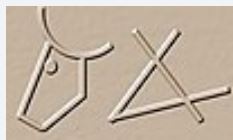
2. Beyt

Beyt derives from the word “Bayit” which means house or household in Hebrew and other Semitic languages. The concept of Beyt is a “House” but with the deeper significance that this was your “SAFE PLACE” protecting you from the elements and marauders. When the Beyt has the Dagesh or dot inside it has a “B” spimd bit there are letter and vowel sequence where the B sound is more difficult to pronounce so the Dagesh must be removed according to rules of grammar and then it becomes a Veyt and is pronounced like a “V”. In linguistics this is call a STOP and a FRICATIVE. B is a STOP because the B sound explodes from your lips and the sound cannot be sustained. On the other hand the V which is the FRICATIVE can be sustained for as long as you wish. The value of Beyt is 2.

3. GIMMEL

Gimmel derives from GAMAL which is Arabic for a CAMEL. The concept behind this is to symbolize TRANSPORTATION. in the abstract. This comes about because the value of Gimmel is 3. This is because people have 2 legs which camels, horse, and other animals often have 4 legs. So 3 is the mean of 2 and 4 to symbolize TRANSPORTATION in a generic sense and not limit it to humans.

4. Dalet

Dalet comes from “DELET” which literally means a door but symbolizes a passage way in its full meaning. The could be the entrance to your house all the way to the PASSAGE WAY to you life’s goals. The value of Dalet is 4. It is also interesting that the Dalet began as a rectangle but was later transformed to a triangle. The value of Dalet is 4 and it has a “D” sound.
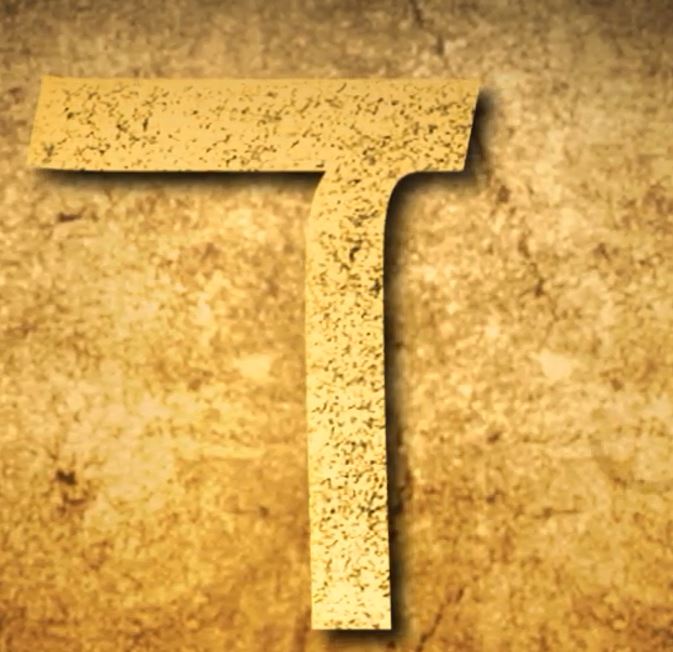
5. Heh

The Heh roots back to Egypian Hieroglyphs and means G-d. Hebrew also uses Heh for G-d as describe in G-d adding a Heh to Avram’s (Abram) name to transform it into Avraham (Abraham) signifying that he was blessed by G-d. Similarly his wife Sarai’s was transformed into Sarah. However Hebrew adapts the explanation to H being short for HaShem (literally “The Name”) implying G-d because we are not allowed to use his actual name in vain. So we use a euphemism.
The value of Heh is 5 and connects to the thumb or 5th finger which elevates the functionality of our hands over all animals and possibly implied that our hands because of the thumb is more G-d like.

6. Vav

The Vav derives from a hook or nail that you use to hang or support things on. This also sometimes suggests something that you can depend on. Aside from being a letter at the beginning of a word it acts as the connector “AND” suggesting continuity and connection of events. In other words this is what happened and it the leads to the following event. In grammar in the Bible when the Vav appears before a verb it changes past tense into the future tense and the future tense into the past these. So below the surface the Vav may be suggesting the same form of event connection through the Vav’s effect of tense in verbs.
The value of Vav is 6.
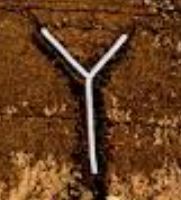
7. Zayin

The Zayin derives from a weapon. But very interesting is that we have another word for “weapon” or “armed” which is חמוש “Chamush” which derives for the word for five while the value of Zayin is seven. This could means that standard battle gear included 5 main weapons and Zayin in the same linguistic form is “MeZuyanim” also for “armed” could imply “Armed to the teeth” including the full complement of weapons one mioght need for battle. As long as we are here, the adjective form of five is “Chumaxh” implyinmg armed with “F” which is the Five Books of Moses” implying protected by G-d.
The value of Zayin is 7
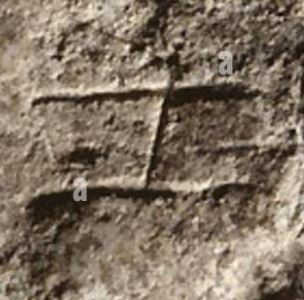
8. Ĥet (Please note we use a special Ĥ here to denote the special pronouncing of the Ĥet by people from Arabic speaking countries). The sound is harder than Heb but less than Khaf.

There are many different suggestions for the origin of Ĥet. Hieroglyphics suggests a “courtyad” or fenced in enclosure possibly for animals. Another suggestion is “Thread” or Ĥoot which would connect to a tailor today Ĥayat. Another is sin or Ĥeyt.
The value of Ĥet is 8.
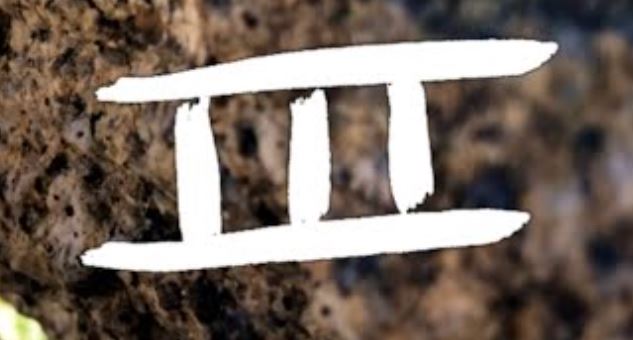
9. Tet

The origins of Tet are said to be basket and clay where baskets may have been made from clay. But let’s promose that the source was clay the key material back then from normal building projects such as the Hebrews making bricks, or pots and putting inscriptions on them Please discard your 21st century thinking and try to get back three or four thousand years and try to understand those times, their tools, material, skills, etc. Clay was ideal. Easily available, moldable, strong after baking in ovens and so forth. This is why it deserves an honored place in the 2 dozen most important symbols of the alphabet.
Two more suggestions for Tet are a “WHEEL” or “INTERSECTION OF TWO ROADS”.
10. Yod

The letter Yod derives from “YAD”
which means “HAND” but takes certain liberties. Sometimes it means the hand directly and other time the reference is more encompassing with the “ARM” as shown in the Proto-Sinaitic image which was taken from Hieroglyphics. With the hidden connection to HEH with implicit finger reference through the letter value this is the second anatomical based letter. And the next letter too will connect as we shall see. When we conclude the two anatomical based sequences with three letters each we will have both the “HAND” and the “HEAD” symbolizing the creativity of the mind supported by eyes and mouth and the hand comprised of the arm, hand, and palm. The message here is you head is in control of thinking, seeing, and speaking and your hand is the instrument of your actions. And during the Passover Seder we use references to these body parts associating them with the action of G0d as he performs the miracles of Exodus.
The letter value of Yod is 10.

11. Kaf, Khaf, Final Khaf

While the letter only had one visual representation in Proto-Sinaitic and Ancient Hebrew, it has three forms in Modern Hebrew. The first is the form with the Dagesh again meaning that this is a STOP which cannot be elongated. The second form without the Dagesh if the FRICATIVE which can be elongated. And if the letter falls in the final position of the word then it takes the final form as shown above. The letter Kaf completes the sequence of anatomical letters derived for the Hand. Here the meaning of Kaf is “PALM” and also is used for a SPOON which is another form of a cupped device to hold liquids and other substances.
The value of the Kaf is 20 and this is where the value departs from the ordinal number of the letter.

12. Lamed

Lamed in my opinion is one of the most esoteric letters of the Hebrew alphabet. The common association is quite removed from its original origins and it take a bit of a stretch to achieve the connection. Today almost all students of Hebrew know the word Lamad which is the root of Lamed means “to learrn”. But originally it derived from the Shepherd’s staff or goad which today in more graphic terms would be a cattle prod used to guide the herd which ever direction you wanted and or defend oneself from threatening marauders. As such the proto-Sinaitic symbol now makes a whole lot more sense that the visual image of Modern Hebrew.
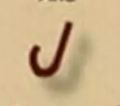
13. Mem

The letter Mem derives from “MAYIM” which is “WATER” in Hebrew. Looking at the Proto-Sinaitic and Ancient Hebrew visual images this is quite clear. However the change of the Aleph Bet to Modern Hebrew with the Assyrian writing system loses the visual fidelity of the letter.
At the beginning of the Webpage we used the Mem example to show how the Bible exploits Alphabetic clues and number values at part of the literary style. So rather than find other example I will recycle the material here as it is appropriate.
Now we will return to the story of Noah. In the story the two primary words are מים water and מבול which is floor. Both words begin with the letter מ Mem which derives from מים Water. An the next obvious question is how long did the Flood last? And the answer if 40 days and 40 nights. So what is the numeric value of the letter Mem? And the answer is 40. This is a short example how the Torah/Tanakh delicately weaves additional layers of relevant information into the narrative for the reader’s enlightenment if only they had the skills and ability to decode it.
The value of Mem is 40.

14. Nun

There are differing opinions of the origin of the visual image for the letter Nun. Some believe it comes from the Egyptian Hieroglyph of a snake, the Hebrew word and Proto-Canaanite Nachash was used for the associated name for this letter. Others reference Aramaic and Akkadian where it is a fish and in Arabic it is a large fish or whale. And the last suggestion is a seed sprouting. Based on my reading of the Torah I would favor the snake because it appears in the Garden of Eden, with Moshe (Moses) in the story in with the snake biting and killing people until they put an depiction of a snake on a pole. In other words snakes were a common problem and theme in those day and we again are largely disconnected from the life of the Bible and what they endured.
Nun is another letter that has a normal and final form. The value of Nun is 50.
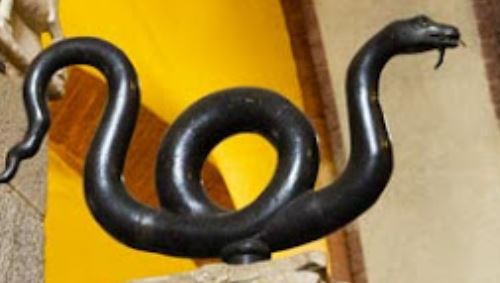
15. Samech

Samekh is a little problematic. The word connects nicely with the Hebrew “SOMECH” which means support as in a support pole or column. But in Arabic it means “FISH” but it would be the only Phoenician letter of the Alephbet which does not have an equivalent letter in Arabic. So base on the majority of evidence I will go with “SUPPORT”. Philosophically it fits with concepts of the Torah.
Samech has a value of 60.

16. Ayin

Ayin is pretty obvious as it means “EYE” in Hebrew and throughout Hebrew. This is the first of the anatomical parts related to the head and one of the important literary techniques is the construction of passages from acrostics built on the Hebrew alphabet. The classic one is the Book of Eicha or Lamentations in chapters 1 through 4. Chapters 1, 2, and 4 have 22 verses built on the 22 letters of the Hebrew alphabet and chapter 3 uses 3 verses for each letter with different first words. Also noteworthy is that chapter 1 is the only chapter of the 5 chapters where the letters are in the correct order. In chapter 2, 3, and 4 the verses of thee Eyin and Peh are intentionally switched by the order to send the message of warning: “If you open your MOUTH before you open your EYES, you will bring tragedy upon yourself”. Another place in the Bible where the EYES and MOUTH are key components is the story of Billam where Billam is riding the donkey and G-d causes a miracle and opens the eyes of the donkey. Three times the donkey sees the Angel of Death with his hand outstretch and the sword pointing at the master Billam. The donkey tries to save the life of Billaam by stopping and avoiding the Angel of Death and each time Billam strikes the donkay. Then G-d performs the final miracle and opens the mouth of the Donkey who then speaks up “Why did you strike me these three times?”. Note that G-d did the Eyes first and the Mouth last which is the correct order.
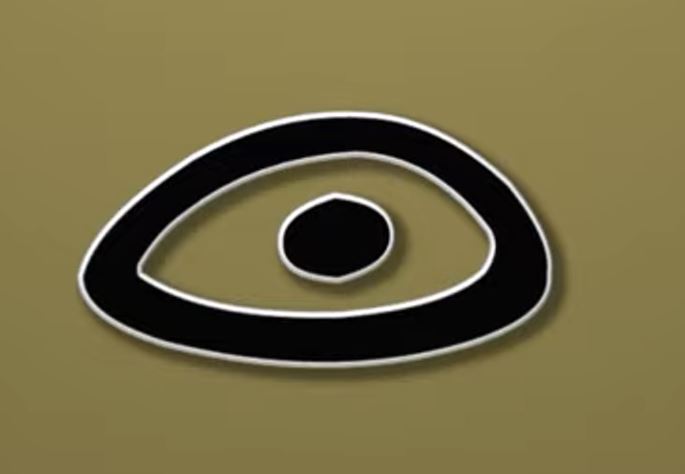
17. Peh, Feh, and Final Peh

The meaning of Peh is mouth andits visual is far clearer in the Proto-Sinaitic writing system. I won’t repeat the portion about the acrostics and use of Eye and Pey in Lamentations.
The letter Pey has 3 variations: STOP with the Dagesh or dot, FRICATIVE without the Dagesh or dot, and the Final form when the letter falls on the last letter of a word. Again the STOP “
P” sound explodes from the lips and cannot be sustained while the F sound FRICATIVE can be sustained.
The value of Pey is 80

18. Tzadi and Final Tzadi

Tzadi comes from the root “TZAD” which has connotations of hunting, pursuit, journey, side, destination, and stronghold. Unfortunately people would recite the Alephbet full speed and run the Tzadi into its successor and inadvertently add the Kof sound to the Tzadi making the word “Tzadik” which means righteous and got so excited about the potential of this deviation from the real truth that in many places it took root even though there is no basis for the connection other than coincidence. On the other hand the visual representation of the Tsadi is fascinating. With the possibility of steps we can see the step like structure of the northern face of Massada in the image in the right column. The shape of the Tzadi can also help us explain the error in the spelling of Isaac’s name in Psalms chapter 105:9 where Yitzhak is spelled with a Tzadi instead of a Sin. Please look at the similarity between the Tsadi in ancient Hebrew above and the Sin in Ancient Hebrew. This shows that if you rotate the Tzade -45 degrees and remove the tail you get an Ancient Hebrew Sin. So this could have been a scribal error. But unless you know Ancient Hebrew writing you would never see this. Also note that we can find exactly the same phrase but spelled correctly in Chronicles 1 chapter 16:16. This is a great example about understanding the journey of the Tanakh (Bible) and the linguistic journey as well.
The value of Tzadi is 90

19. Kof

The common associations with the letter Kof are back of the head, encircle, eye of a needle, and monkey. Needs more work.
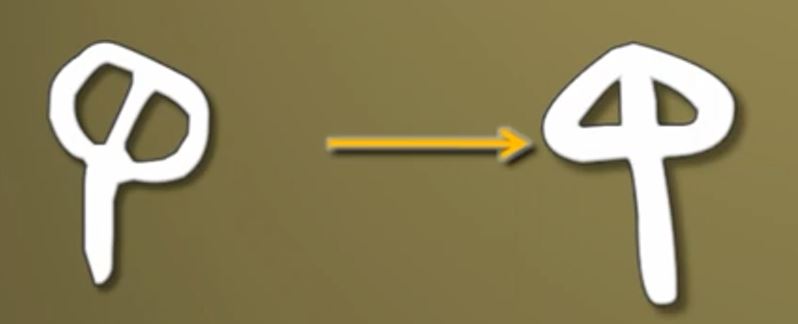
20. Resh

The letter Resh derives from “ROSH” pr “HEAD” in English. As such it is the main anatomical Alphabetic letter and is associated with the Ayin (EYE) and PEH (MOUTH) and SHIN which derives from SHEN (or Tooth). So Rosh is the dominant anatomic based letter.
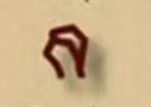
21. Shin and Sin

The letere Shin derives from the Hebrew word “SHEN” which means tooth. Again we must discard our 21st century thinking and try to get into the Biblical Period to understand the importance of the Shin by understanding the important of teeth. Back then teeth were essential to eating and they did not have dentists and hygenists. So if you had dental problems, lost teeth, etc. it could be life threatening and enormously painful.
The Shin and Sin are essentially two pronunciation of the same letter although they act as distinct letters. But I cannot think of any words that can be spelled with both the Shin and the Sin and have different meanings. Also there were no differences in the Proto-Sinaitic, proto-Canaanite, and Ancient Hebrew writing systems. This only came about in the Modern Hebrew alphabet. The Shin is the one with the dot on the top of the right hand side of the letter and the Sin is the one with the dot on the top left hand side of the letter.
The value of the Shin and Sin are 300.

22. Tav and Tav

The letere Shin derives from the Hebrew word “SHEN” which means tooth. Again we must discard our 21st century thinking and try to get into the Biblical Period to understand the importance of the Shin by understanding the important of teeth. Back then teeth were essential to eating and they did not have dentists and hygenists. So if you had dental problems, lost teeth, etc. it could be life threatening and enormously painful.
The Shin and Sin are essentially two pronunciation of the same letter although they act as distinct letters. But I cannot think of any words that can be spelled with both the Shin and the Sin and have different meanings. Also there were no differences in the Proto-Sinaitic, proto-Canaanite, and Ancient Hebrew writing systems. This only came about in the Modern Hebrew alphabet. The Shin is the one with the dot on the top of the right hand side of the letter and the Sin is the one with the dot on the top left hand side of the letter.
The value of the Shin and Sin are 300.


